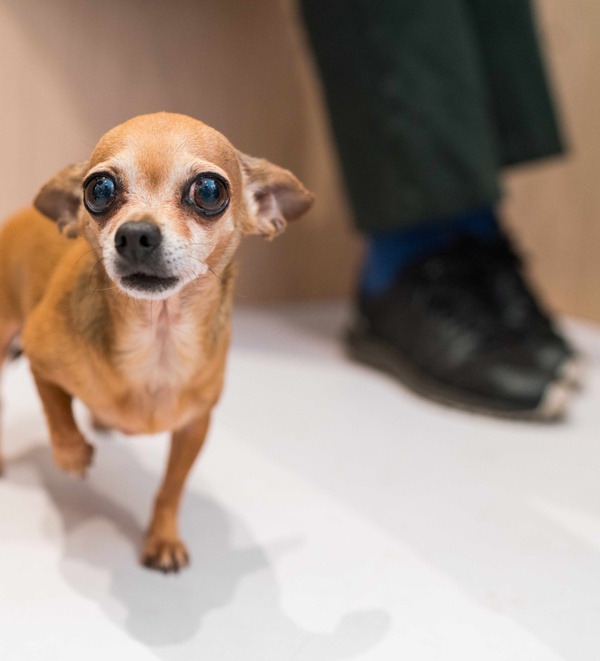
How to Train Your Dog to Use a Pee Pad
When it comes to roommates, being housebroken is probably pretty high on your list of ideal qualities. And it’s no different when your roomie is a little bit furry and a lot behind on the rent.
Whether you’ve just brought home a new puppy or you’re looking to make things easier for an older dog who needs just a little more help, puppy pads can be a convenient solution for both of you.
Depending on your dog’s age, breed, and personal preferences, potty training can take a while. But if you’ve gone through the pros and cons of pee pads and decided that they’re the best way, well, to go, with patience and active training, you and your pup can achieve pee peace.
Set it, but don’t forget it
When it comes to any kind of training for your dog, consistency is key. Select a spot as your dog’s designated bathroom area—spaces with hard flooring are ideal for easy cleanup—and lay down their pads. If space allows, we’d recommend starting with two pads since aiming can be a challenge.
Whenever your dog looks like they need to go, take them quickly to the pad. While they’re using it, it’s helpful to repeat a verbal cue that they’ll eventually associate with the act. Something as simple as “go potty” can do the job. This prompt serves as a reminder of when and where they can go if your dog gets confused later.
Praise it
We’ll admit it: a little praise can spark a lot of joy. Congratulate your pup every time they use their pad properly and remember to always use that verbal prompt we mentioned earlier. You can also offer a small treat as a reward. Positive feedback, whether vocal or edible, reinforces good behavior and incentivizes your dog to keep it up.
On repeat
To keep your dog regular, you need to…keep your dog regular. When you and your dog start training, you should both make periodic visits to their pad, ideally every 2-3 hours, whether they need to go or not. Puppies need frequent bathroom pitstops, so confine them to the pad area without distractions for at least five minutes—you’d be surprised how often they’ll go after an initial standoff. Again, once they go, don’t skimp on the praise.
Accidents happen
There’s a learning curve when it comes to using puppy pads. If your dog goes to the bathroom somewhere in your home besides the pad, bring them back to the pad immediately and stand there for a few minutes while repeating your verbal cues. Yelling or negative punishment is counteractive; all it does it is teach your dog to go in secret or hide the evidence. Just be sure to clean up the soiled area thoroughly with an enzyme-based cleaner so your pup won’t follow any lingering scents and return for round two later.
And if things come to a standstill, sometimes it’s the pup, not the pad. If training has been going well, but your dog finds themselves a little stuck, it may be a sign of something other than the pads not working out. Check out our tips to determine the cause and get things moving again.
In the journey of potty training your furry roommate, the path may not always be smooth, but with patience, consistency, and positive reinforcement, you and your pup can indeed achieve "pee peace." Establishing a designated bathroom area, using verbal cues, and offering praise as well as occasional treats are powerful tools in this endeavor. Remember, accidents are part of the learning process, and instead of resorting to negative punishment, a gentle redirection and thorough cleanup will help your pup understand the desired behavior. So, embrace the learning curve and trust in the process. As you work together, you'll build a stronger bond with your four-legged friend, one successful pad moment at a time.
Sources: